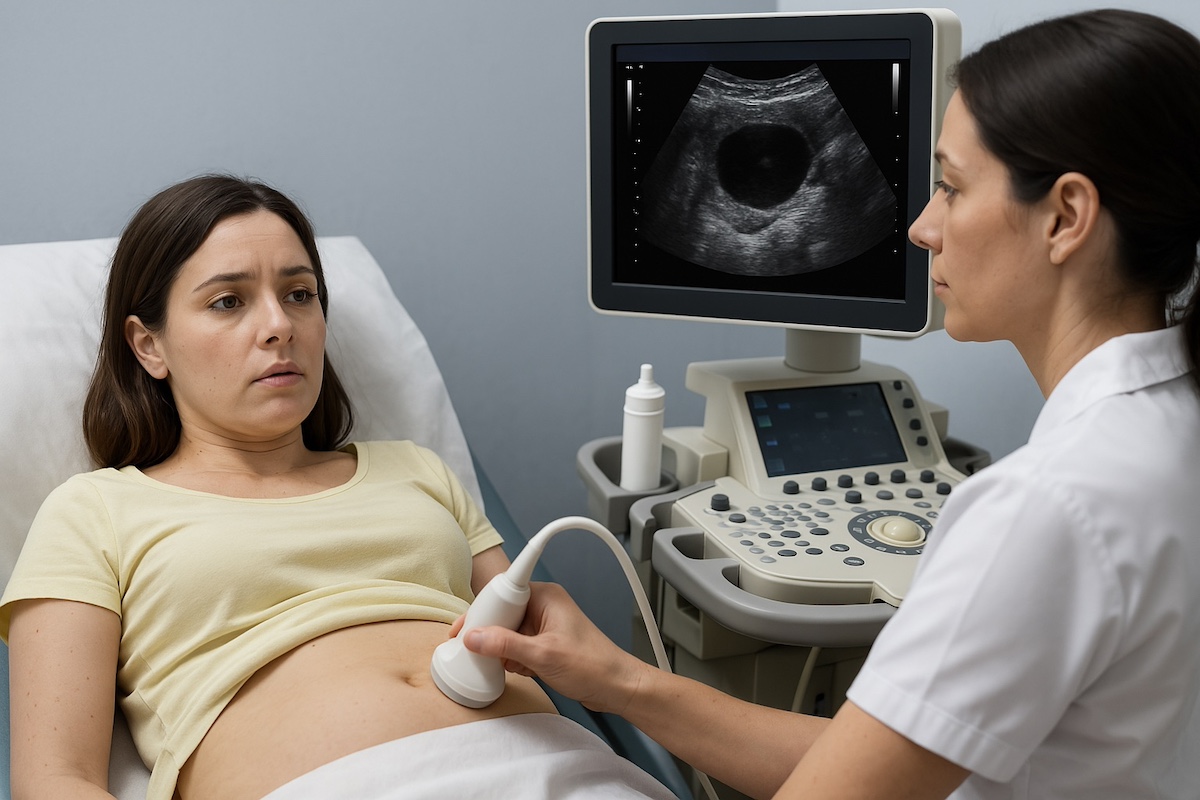Endometriosis is a painful and often misunderstood condition that affects millions of women worldwide. It occurs when tissue similar to the lining of the uterus (endometrium) grows outside the uterus, leading to inflammation, scarring, and sometimes severe pain. Diagnosing endometriosis can be challenging, and many women wonder if an ultrasound can detect this condition.
This guide will explore how ultrasounds work in identifying endometriosis, their limitations, and what other diagnostic options may be available.
Understanding Endometriosis
What is Endometriosis?
Endometriosis is a condition in which tissue similar to the uterine lining grows outside the uterus, commonly affecting the ovaries, fallopian tubes, and the tissue lining the pelvis.

This misplaced tissue behaves like normal endometrial tissue, thickening, breaking down, and bleeding with each menstrual cycle. However, because it has no way to exit the body, it becomes trapped, causing inflammation, pain, and scar tissue formation.
Common Symptoms of Endometriosis
- Chronic pelvic pain
- Painful periods (dysmenorrhea)
- Pain during or after sex
- Heavy or irregular menstrual bleeding
- Infertility
- Fatigue and digestive issues
How is Endometriosis Diagnosed?
Diagnosing endometriosis involves several steps, including a review of symptoms, a physical exam, imaging tests, and sometimes surgery. Common diagnostic tools include:
- Pelvic exam: A doctor may feel for abnormalities, but this is not always conclusive.
- Ultrasound: Helps identify ovarian cysts related to endometriosis.
- MRI (Magnetic Resonance Imaging): Provides detailed images of the reproductive organs.
- Laparoscopy: A minimally invasive surgery that provides the most definitive diagnosis.
The Role of Ultrasound in Detecting Endometriosis
What is an Ultrasound?
An ultrasound is a non-invasive imaging test that uses sound waves to create pictures of structures inside the body. It is commonly used to examine reproductive organs and detect abnormalities.
Can Ultrasound Detect Endometriosis?
The ability of an ultrasound to detect endometriosis depends on the type and severity of the condition.
- Superficial endometriosis (small lesions on pelvic organs or peritoneum): Often cannot be seen on ultrasound.
- Ovarian endometriomas (chocolate cysts): These can be clearly identified on an ultrasound.
- Deep infiltrating endometriosis (DIE): In some cases, an experienced sonographer can detect deep infiltrating endometriosis, which affects tissues deeper in the pelvis.
Types of Ultrasounds Used for Endometriosis Detection
- Transabdominal Ultrasound: A probe is placed on the abdomen to provide a broad view of the pelvic organs.
- Transvaginal Ultrasound (TVUS): A probe is inserted into the vagina, offering a clearer and more detailed view of the uterus and ovaries.
- Advanced Ultrasound Techniques: Some clinics use specialized techniques like sonovaginography to enhance the visualization of endometriotic lesions.
Related Reading – Fulguration of Endometriosis
What Endometriosis Looks Like on an Ultrasound
Signs of Endometriosis on an Ultrasound
- Ovarian endometriomas: These appear as cysts with thick walls and internal debris.
- Adhesions and scarring: In some cases, ultrasound can detect abnormal tissue connections between organs.
- Enlarged or distorted pelvic structures: Severe cases may show signs of organ displacement.
Why Some Cases Are Missed on Ultrasound
- Small lesions are difficult to detect: Endometriosis outside the ovaries often goes unnoticed.
- Misinterpretation of findings: Not all sonographers specialize in recognizing endometriosis.
- Other conditions can mimic endometriosis: Ovarian cysts, fibroids, and infections may produce similar imaging results.
Alternative Imaging Tests for Endometriosis
MRI (Magnetic Resonance Imaging)
MRI provides a more detailed view of soft tissues compared to ultrasound and is useful in detecting deep infiltrating endometriosis.
Laparoscopy – The Gold Standard
If imaging tests are inconclusive, laparoscopy is the most accurate method for diagnosing endometriosis. This minimally invasive surgery allows doctors to directly view and remove endometriotic tissue.
Related Reading – Adenomyosis vs. Endometriosis: Key Differences Explained
FAQs About Endometriosis and Ultrasound
Can endometriosis be diagnosed with an ultrasound alone?
Ultrasound is helpful but not always definitive. While it can detect endometriomas, it may not identify smaller lesions or deep infiltrating endometriosis.
What is the best imaging test for endometriosis?
MRI is more effective than ultrasound for detecting deep infiltrating endometriosis. However, laparoscopy remains the gold standard for diagnosis.
Can a normal ultrasound rule out endometriosis?
No. Many cases of endometriosis do not show up on an ultrasound, so a normal result does not mean the absence of the condition.
Does an endometriosis cyst look different from other cysts on an ultrasound?
Yes. Endometriomas typically appear as cysts with thick walls and dark fluid inside, unlike simple ovarian cysts, which have clear fluid.
How can I prepare for an ultrasound to check for endometriosis?
- Drink water before a transabdominal ultrasound to fill the bladder for better imaging.
- Wear comfortable clothing.
- Follow any specific instructions from your doctor.
Related Reading – Endometriosis Recovery Time
Conclusion
Ultrasound is a valuable tool in detecting certain forms of endometriosis, particularly ovarian endometriomas, but it is not always sufficient to diagnose the condition fully. If you are experiencing symptoms of endometriosis, seeking care from specialists is essential.
At Clinton Women’s Healthcare, we specialize in diagnosing and managing endometriosis with a compassionate and patient-focused approach. Our experienced team provides advanced imaging, personalized treatment plans, and expert care to help you find relief. If you suspect you have endometriosis or need guidance on your reproductive health, schedule an appointment with Clinton Women’s Healthcare today.
Your health and well-being matter, and with the right medical team, you can take control of your symptoms and find the best treatment for your condition.
